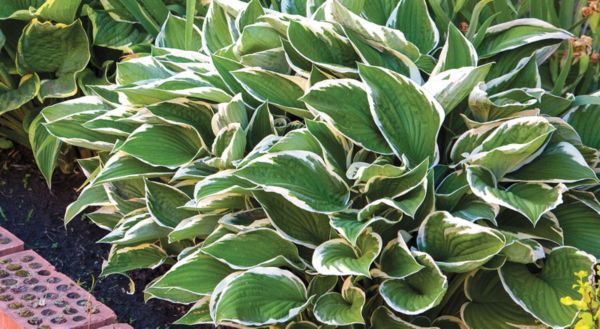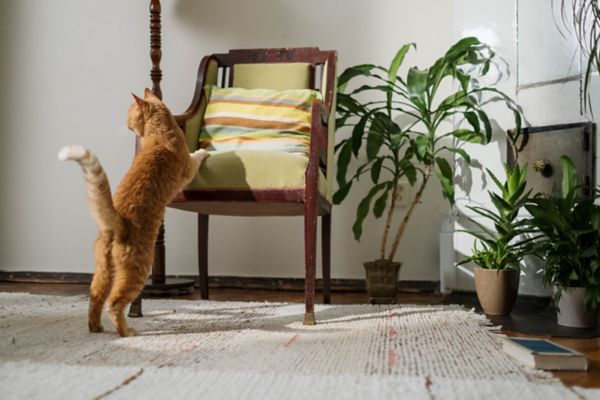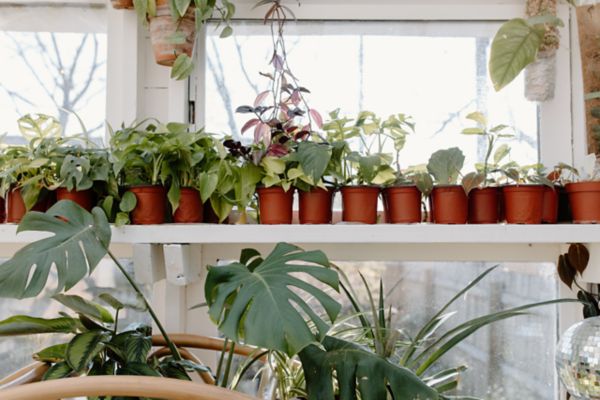How to Grow Ficus
Authored by Leah Chester-Davis
Ficus can add a focal point to various spots in your home. Smaller plants in pretty containers are perfect for desk- or table-tops. Large plants make striking floor accents.
Ficus is a tropical or semi-tropical plant known as fig, which produces small fruits. But there are many ornamental varieties that are popular as houseplants due to their beautiful foliage which can be green, burgundy or variegated, and thin and narrow to large and leathery. Plants range from tree forms, to shrubs, to those with vining or creeping habits that are grown outdoors and can be a good choice for topiaries.
About ficus
| Botanical name: | Ficus |
| Common name: | Ficus, weeping fig, fiddleleaf fig, rubber plant, long leaf or banana leaf, depending on the type |
| Plant type: | Small tree, commonly used as a houseplant |
| Size: | Ranges from 14 inches to more than 10 feet |
| Sun exposure: | Bright, indirect light |
| Soil type: | Rich, well-drained |
| Soil pH: | 5 to 6.5 |
| Hardiness zones: | 10 to 12; elsewhere as houseplants |
| Average first frost: | Varies by region |
| Average last frost: | Varies by region |
| Container friendly: | Yes |
| Beginner friendly: | Yes |
Growing
Most houseplants in the genus Ficus need plenty of bright, indirect sunlight. Place near south-facing or southwesterly facing windows and away from heating or air conditioning vents as they do not like drafts. At lower light levels, ficus may drop leaves. For a ficus that can tolerate some lower light, try the rubber plant.
Indoor plants typically prefer temperatures between 70- and 85-degrees F. If temperatures drop below 60 degrees F ficus tends to suffer.
Ficus can be moved outdoors during the summer months. Like any plant that is moved from indoors to outside, give it a chance to acclimate by placing it in a protected, shady area. Even outdoors, ficus will need an area that protects it from the direct sun, which can cause leaf drop. The ornamental plants rarely bloom or produce fruit.
Popular ficus for houseplants
Weeping ficus
(Ficus benjamina)
Weeping ficus is noted for its elegant form and its glossy, dark green foliage. It is grown as a small tree with a single trunk and with graceful, arching branches. On occasion, you may see them with braided trunks, which is done when the plants are young and pliable. Weeping figs are typically available in 3- to 6-feet tall sizes, though they can grow larger if left unpruned.
Fiddle-leaf fig
(Ficus lyrata)
Fiddle-leaf is a dramatic plant with large leaves that can grow 8 to 15 inches long and 10 inches wide. The plant can get as tall as 6 feet or more. Stake as needed to provide support. It gets its name from the fiddle-shaped, leathery leaves and makes quite a focal point or architectural statement in the home. There are now some fiddle-leaf types on the market that are smaller, growing to around 2 feet tall. They are sometimes referred to as bambinos and are perfect for smaller spaces. Look for ‘Little Fiddle’.
Rubber plant
(Ficus elastica)
The rubber plant has large, glossy leaves that grow 8 to 12 inches in an oblong shape. It can grow 6 to 10 feet. The leaves may be dark green or even deep maroon. Some have a mix of color markings such as white, cream, yellow, or pink that may appear as splotches on the leaves. Ficus elastica ‘Ruby’ is a variegated option that boasts white, pink, and green colors.
Longleaf or narrow-leaf fig
(Ficus binnendijkii)
Longleaf fig has 10-inch-long, shiny green leaves that taper and give it a palm-like appearance. It grows to about 6 to 10 feet tall as a houseplant and can be pruned to control size.
Planting
Any houseplant, especially ficus, needs to be in a container that has adequate drainage. Ficus needs rich, well-drained soil. Use a good quality potting mix.
Weeping figs typically like higher humidity levels and warmer temperatures, while other types of figs, such as the rubber plant can handle medium humidity levels. If your home environment is quite dry, consider adding a humidifier or using another method to add humidity.
Ficus plants can be quite finicky. They need consistent water but avoid overwatering and don’t let them get too dry either. Water when the top 2 inches of soil is dry. When water is needed, water until it drains out the drainage holes. Empty extra water from the saucer.
Plan on repotting your ficus every couple of years. A way to tell it needs to be transplanted into a larger container is to check the drainage holes. If roots are extending out the holes, it’s time to repot. Fill in with quality soil fix and a slow-release fertilizer for houseplants. Follow label directions.
Water when the top 2 inches of soil is dry.
Fertilizing
- During the active growing season between spring and early fall is the best time to fertilize houseplants. Apply a balanced liquid fertilizer once each month at half the strength recommended on the label. When plant growth slows during the fall and winter months, cease fertilization.
- The longleaf or narrow-leaf fig, sometimes called banana leaf fig, is an exception to monthly fertilizing during the growing season. It needs fertilizing only a couple of times during the growing season.
Controlling Pests, Diseases, and Other Problems
- Frequent watering or poor soil that does not drain adequately can result in root rot. Use a quality potting mix. If needed, mix in perlite to facilitate drainage. Underwatering can also be a problem and cause leaves to drop.
- Mealybugs, scales, and mites can be problems. Clemson Extension recommends using a cotton swab dipped in rubbing alcohol to wipe off insects such as mealybugs. Scale insects may need to be scraped off with a fingernail. Repeated water sprays can help control spider mites.
Clemson Extension recommends washing weeping fig leaves occasionally in plain, warm water to help the leaves “breathe” and improve their appearance.
Expert Tips
- Clemson Extension recommends washing weeping fig leaves occasionally in plain, warm water to help the leaves “breathe” and improve their appearance.
- Prune ficus as necessary to maintain its shape or to promote a bushier habit. If plants become too tall and leggy, give the plant a light pruning just above a growth node. Winter is the best time to prune when the plant growth is the slowest. Ficus emits sap when cut so wear gardening gloves to avoid skin irritation.
- Keep the plant near windows with bright, indirect light. If needed, consider placing a full spectrum LED light about two feet away.
Frequently asked questions
When should I repot my ficus?
Ficus does not need to be repotted often. When it appears it is suffering from being rootbound, repot. You can tell whether it is rootbound by checking the drainage holes at the bottom of the pot. If the roots are visible, it’s time to repot. Transplant it to a container that is slightly larger, about 2 inches, and deeper than the current container.
When and how much fertilizer do I apply to my ficus?
During the growing season from spring to early fall, apply a balanced liquid fertilizer at half strength. For amounts, follow label directions for houseplants. When the plant growth slows in late fall and winter, cease fertilizing.
Why are the leaves falling off my ficus?
Leaf drop is common for ficus. This plant needs bright, indirect light, even temperatures, a location away from drafts, and consistent watering.





